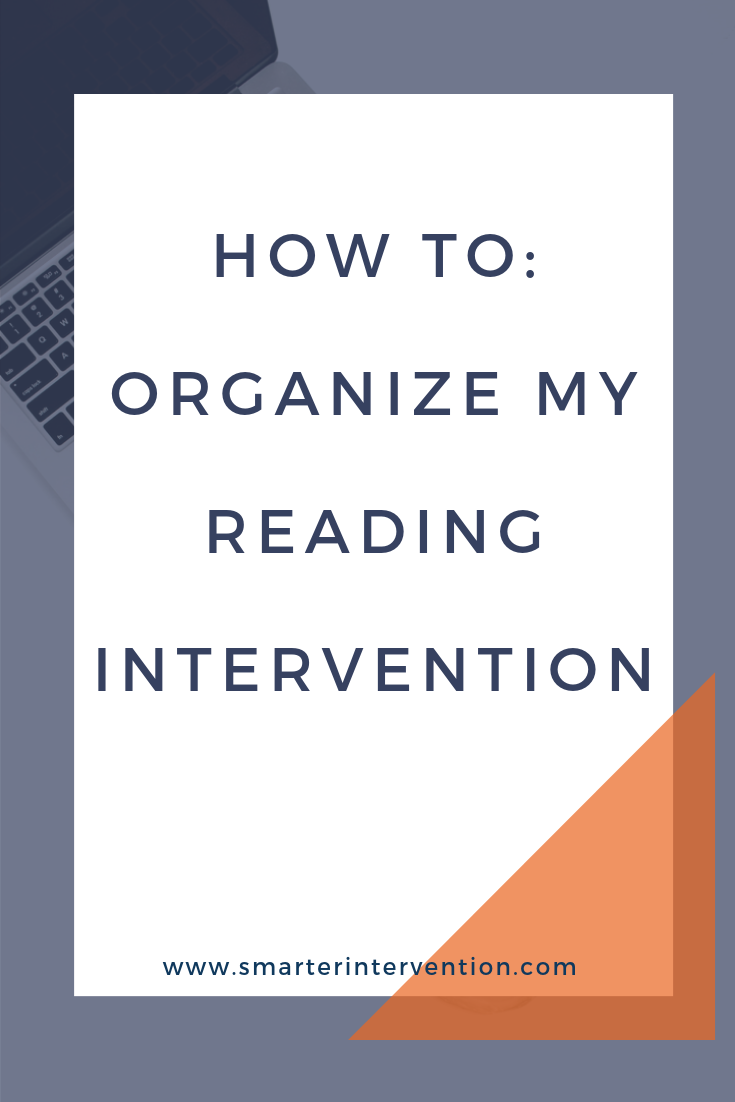How To: Organize My Reading Intervention
One of the hardest things we face as interventionists is knowing where to start with our students and how to move forward through the sessions to help our students reach their goals.
Research-based reading intervention is supposed to be structured and flexible... But, how are we supposed to do both?
There is no doubt that research-based intervention asks a lot of the interventionist. Following a curriculum is definitely a huge help because your instruction should be structured, sequential, and cumulative.
In other words, each lesson will be structured around the core components of structured literacy including practicing phoneme sounds, reading words based on taught patterns, spelling words based on spelling patterns and rules, sight word practice, morphology, vocabulary, and reading & writing comprehension.
Each lesson should be sequential in its order and cumulative - starting with simpler reading concepts and building to more complex concepts. You should never be throwing concepts at students like spaghetti to a refrigerator hoping that something, anything, will stick. Rather we should be working through a well-thought-out and organized fashion.
Good reading instruction does not just hit on all the key components of a lesson in each lesson, but rather it starts with the simpler topics growing in a sequential and cumulative manner. You should be keeping track of the concepts you have taught so that you don’t ask your student to read something you have not taught them yet, though this absolutely happens from time to time.
And then, there is the one extra kicker, the one final twist that research-based intervention throws at you - flexible instructions! WHAT?! really?! It needs to be structured, sequential, cumulative, AND flexible! When you're first starting out, this really feels like an unfair and absurd expectation. But, what does this mean and how can we help you achieve this standard?
If you have access to a solid research-based curriculum that is structured, sequential, and cumulative then achieving the standard of flexibility is a lot easier. With a solid curriculum as your base, you can start to be creative, fun, and flexible. This really means paying attention to your students. What are they struggling with? What comes easily to them? What just won't stick even though you have gone over it many, many times?
Being flexible means slowing down and staying on one lesson for two sessions if needed, speeding up and challenging your higher level students to apply their knowledge beyond just the questions on the page, and finally, adding in extra work only in the area that you see the student needs.
Staying flexible can also look like making the lessons individualized - you know your student, you know what video games, sports, books, movies, and animals they love and can talk for hours about - pepper in references. The other day I was teaching one of my students ‘oy’ and he had previously told me his favorite baseball team was the Kansas City Royals, so I added this into his decoding words and to his spelling words, and when I played a game of hangman with him where the phrase was Kansas City Royals. These are all ways to keep it flexible while still using a structured, sequential, and cumulative curriculum.
If you want to learn more about systematic reading intervention, check out our workshop: How to Create Systematic, SOR-Aligned Lesson Plans. This workshop will help you determine what actually needs to be included in a Science of Reading-based lesson, how to build a lesson plan based on the Science of Reading, and how to optimize your lesson plans. Plus, we’ll share our lesson planning guides!

